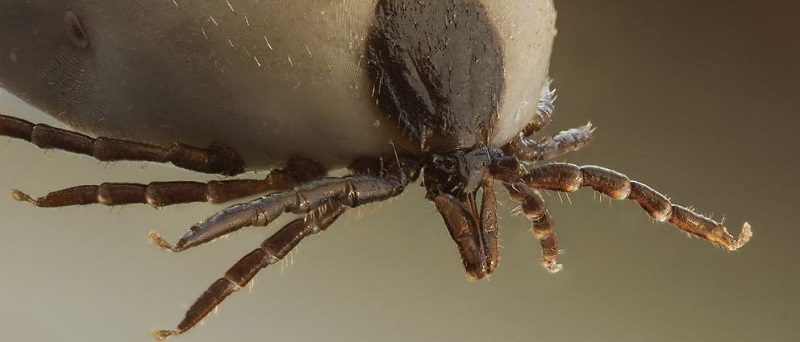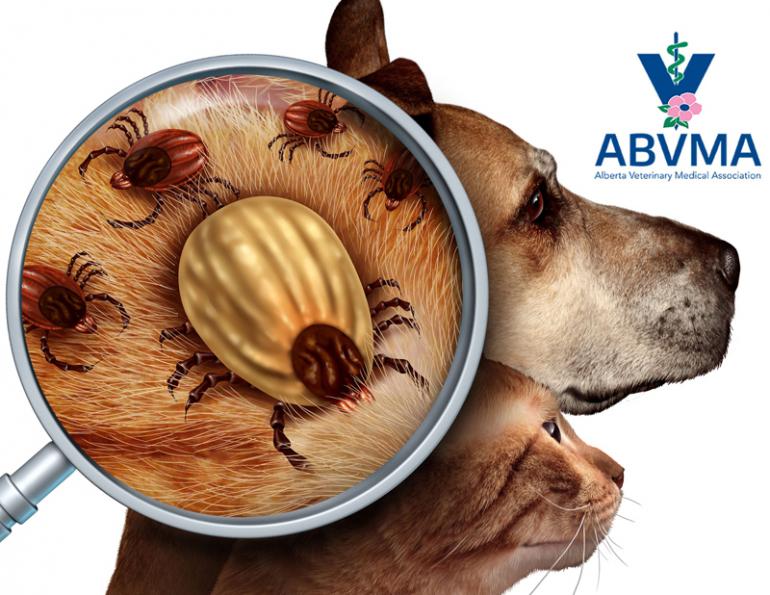Edmonton, AB – May 29, 2019 – The Alberta Veterinary Medical Association (ABVMA) urges pet owners to be vigilant about checking pets for ticks and being aware of the risks of Lyme disease, which is now present in Alberta.
As Albertans head outdoors with their pets to enjoy the warmer weather, the ABVMA is reminding the public that it’s tick season (April to October) and that there’s potential for serious health risks if a bite goes unnoticed or untreated. Tick bites themselves cause little harm. The danger lies in a tick’s ability to transmit disease, the most common of which is Lyme disease.
“There have been approximately 100 human cases of Lyme disease reported by Albertans since the early 1990s but all originated outside of the province,” says Dr. Darrell Dalton, Registrar of the ABVMA. “Nevertheless, given the human and animal health risks, there’s a surveillance program in place to monitor the spread of the disease, and successful surveillance requires a vigilant public to check for ticks and signs of infection.”

The first symptom of Lyme disease in dogs is typically a large, circular red rash around the bite area. Infections of the skin, joints, muscles, heart, and nervous system can follow unless treated. Not all animals or people who have been bitten by a tick will contract Lyme disease. It is thought to take 36 to 48 hours before the Lyme disease bacterium can be transmitted, so it’s important to remove a tick as quickly as possible.
Always check your pets for ticks after walks or when bringing them in from outside. Ticks are often too small to see when they first get on your pet prior to being engorged with blood, so inspect carefully. A comb can be used to help spot ticks that may have attached to your pet. The sooner these ticks are discovered, the less chance they have of transmitting harmful bacteria.
If you discover a tick that has bitten your pet, follow these instructions from Alberta Health to remove it safely:
- Using tweezers, gently grasp its head and mouth parts as close to the skin as possible.
- Without squeezing the tick, slowly pull the tick straight up off the skin — do not jerk or twist it.
- Do not apply matches, cigarettes, or petroleum jelly to the tick.
- Once the tick has been removed, clean the bite area with soap and water and disinfect the area with an antiseptic. Wash hands with soap and water.
- Save the tick in a clean, empty container. Do not add any ventilation holes to the container that is being used to put the tick(s) in. You can put more than one tick in the container if they are found on the same person or animal in the same general area in the environment.
- Add a small piece of tissue or cotton ball, lightly moistened with water, into the container to prevent the tick(s) from drying out.
- Submit the tick for testing as soon as possible.
Tick surveillance and submission is crucial to tracking the spread of tick-borne diseases, and it allows the government to inform us of outbreaks and high-risk areas. If you are uncomfortable or unable to remove the tick yourself, contact your veterinarian for removal, though the earlier a tick is removed the less chance it has to cause infection.




























